June 2013
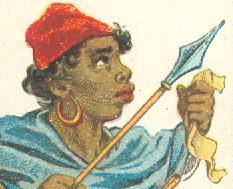 |
Miriam had
just returned home from 6 days in hospital a week before the Belgian
National Playing Card Museum held their annual international collectors
meeting. So she wasn't ready yet to come along on the first day of this
month and had to miss the nice ambiance of the museum, meeting all the
fellow collectors again and Filip Cremers' lecture at the end. Of course
she couldn't pick out any decks either, but Joop brought home a bag full
for her to choose from.
Fortunately two weeks later Miriam was well enough again to come along
to the Dutch collectors meeting in Velddriel. Also held at a nice
location, but this time there were not as many participants as expected.
Still we brought home some nice decks and Miriam even managed to sell
some jokers, backs and decks there too. |
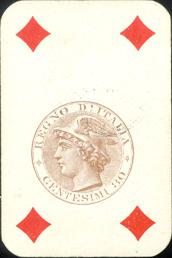
|
|
But for us this was the last meeting,
national or international, before the summer break. So now all we can do is visit the local flea markets and follow the
offer on Ebay, Markplaats (the Dutch auction site) and elsewhere on the
internet. This month we were not very lucky on Ebay. We had bookmarked
several interesting decks, but were outbid on most of them. |
|
The offer on
the Dutch auction site was poor this month and we only found 1 (one!) nice
vintage deck there. But in the end there was a shortlist with some interesting decks
to choose from. Worth mentioning are an unusual designed French deck
from 1983, a brand new Dutch artist deck from May 2013 (will now be
shown in the Art&Cards section) and a German deck from the
1980's with great illustrated courts.
But they
all had to bow to this small Patience deck, of which the 4 of Diamonds
is shown at the actual size (43 x 65 mm). All the other cards here below are
presented at 150% to show more detail. At first glance the deck is easily
mistaken with the Dondorf nr. 27 "Cartes pour Dames". When the
deck arrived, Miriam's first reaction was "but we have that one!". To show
you how easily this mistake is made, we'll show both decks at actual size on a
separate page: click HERE to see them. |
The tax stamp on
the 4 of Diamonds reveals its Italian origine and the name of the maker is
mentioned on each of the courts: Armanino. Our deck came without a box, but we
found a picture of the box on the internet, so we know that it was published as
"Carte per Signora", which is basically the same title as Dondorf had
given their Nr. 27. The card size of that Dondorf deck is almost exactly the
same too: 43 x 66 mm.
The tax stamp also helps dating the deck. For this we always go to Peter
Endebrock's site. There we found that this particular stamp was in use between
1883 and 1914. Although he mentions that the stamp of 30 centesimi was used for
decks up to 40 cards and this deck has 52, the weight of a deck would probably have
been decisive and this small patience deck weighs less than 40 cards from a
regular sized deck. At the WWPCM site the deck is dated 1910 and we tend to
agree, with a possible few years earlier.




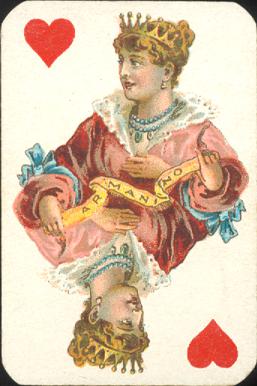

You may have
noticed that we like illustrated aces and somehow there are not that many
decks that show Italian scenes on them. This deck has 5 of them, but the scene of an erupting Etna was
decisive for choosing this deck as Deck of the Month. While we've seen footage
of such an event several times, it's probably the only time this can be seen on
a playing card!
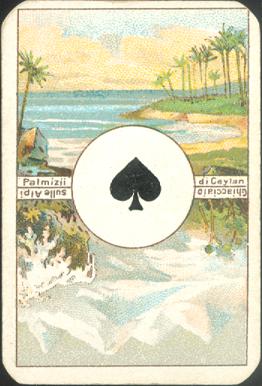


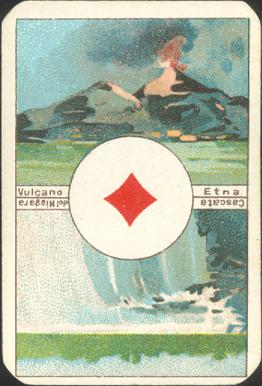
The illustrations
are done in nice soft colors. The text is in Italian, so the deck was probably
produced for the Italian market.
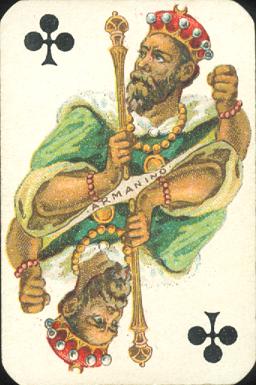

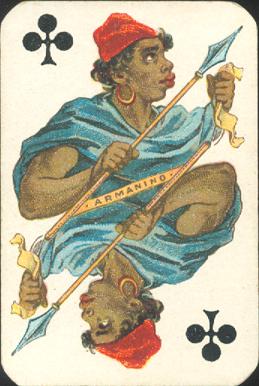

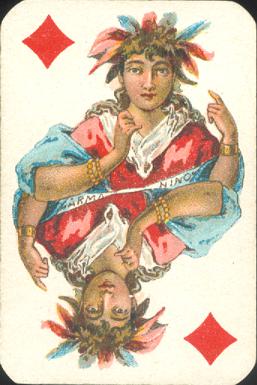
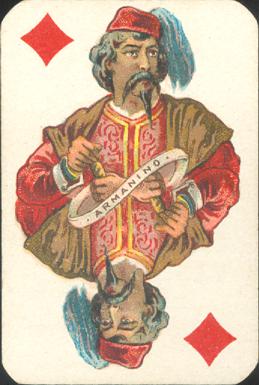
The deck consists
of 52 cards.
|
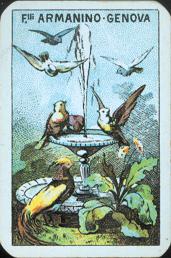
|
On the backs the full name of the maker is
printed: F.lli Armanino. The F.lli is short for Fratelli
(brothers). There's not much known about this maker. The WWPCM mentions
that the company existed between 1885 and c1960, but on an Italian blog
("Mrs Fletcher") we found some more detailed information.
Nicolo Armanino was already a known printer in Genoa and active there
since around 1843. He was married to Adele Gibelli and they had at least
two sons. Adolfo was born in May 1855 and he had Henry as a (older or
younger?) brother . There's some uncertainty about the year, in which
Nicolo deceased, but it was most likely in 1866. The company was then
run by the widow and these two sons. In 1880 the two brothers expanded
their activities and the company moved from the Via Garibaldi to the Via
Varese. With new machinery they specialized in lithographic and
collotype printing. No playing cards were manufactured yet, but the
Armanino company produced a variety of print work. Most famous were
their series of postcard size prints with images of all the popes.
Because of health problems Henry had already left the company in 1882
and Adolfo invested all his time and resources in the company. Between
1892 and 1912 the company had over 400 employees. By that time they had
already started the production of playing cards too. The WWPCM dates
their first known deck as 1885 and mentions a total production of 11
different decks, mostly standard patterned. In 1895 Adolfo is elected in
the municipal council of Genoa, but these activities do not withhold him
from taking over a Milanese printing company in 1906.
|
|
In that
year the official name of the company became Societa Anonima Industrie
Grafiche co Affini "Fratelli Armanino". Probably around 1912
Adolfo steps back from the firm to enjoy retirement. He dies in Genoa in
1928. It's unknown if there were any members of the Armanino family left
in the company, but the name was continued and they had factories in
different parts of Italy. The main plant was in Rome, where forms were
printed for the government and postal services. But the company has also
continued to produce playing cards until around 1960. |
BACK TO PRESENT MONTH


















